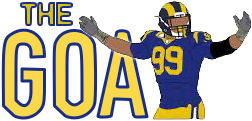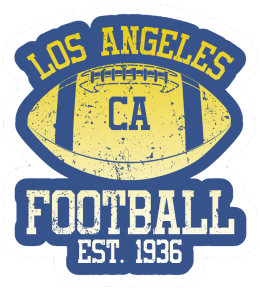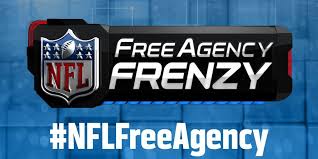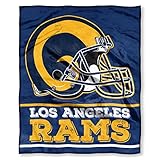- Joined
- Jun 28, 2010
- Messages
- 49,232
- Name
- Burger man

Strongest Position Groups
Wide Receivers
The upcoming wide receiver class is not very top-heavy, with the only true #1 guys being Alshon Jeffery, Terrelle Pryor, and arguably DeSean Jackson (DeSean is contracted for 2017 but it is a dummy year that voids after SB51). However, within the group there is a large crop of players that can definitely contribute as #2 or strong #3 receivers. With the state of the game at the moment, 3 and 4 receiver sets are becoming more popular, so having depth at receiver can be the difference between a good offense and a disappointing one.
Firstly looking at the three big name players. Alshon Jeffery will draw most of the headlines, as he has proven himself as a Pro Bowl quality receiver when healthy. Terrelle Pryor has a very high ceiling, and if he doesn’t return to Cleveland, he could definitely be a Pro Bowler for a team with better QB play. DeSean Jackson has a great resume, and still has the ability to affect opposing defense’s gameplans. Teams will have to pay at least $12m plus for Alshon, and I couldn’t see Pryor going for less than Tavon Austin’s APY of $10.5 million. Jackson could cost a similar value to his current contract of about $8 million APY.
For the rest of the group, looking at UFA’s, 1000-yard receivers Pierre Garcon and Kenny Britt are really the next tier. Both of these guys are already on pretty good money (Garcon $8.5m, Britt $4.5m + incentives) and are still effectively in their prime at 30 and 28. They could be very productive weapons opposite an established #1, and I would look for teams seeking that solution, such as the Bills opposite Watkins or the Bucs opposite Evans, to consider those options.
The next tier down still features some decent talent. Kenny Stills, Brandon LaFell, Jeremy Kerley, Robert Woods, Terrance Williams, Ted Ginn, Marquise Goodwin all had reasonably good years in their roles, and could provide depth to any receiver group. Cordarrelle Patterson and Kendall Wright may also hit the market, both former 1st round picks who have not performed to their expectations, and could be worth taking a look at, in case there is still some untapped potential within them.
There are also guys like Markus Wheaton, who has had a disappointing battle with injuries this year; Kamar Aiken, who had a great 2015, a lacklustre 2016, and could be a cheap bargain with potential; Michael Floyd, a former 1st-round pick who had an up-and-down career in Arizona before being arrested, then handpicked by Bill Belichick to boost the Patriots’ WR room. These guys have all shown ability to contribute in the league, and are boom-or-bust options for WR-needy teams. Vincent Jackson is getting older at 33 years old, and coming off an IR season he may not be worth much investment, but if he reaches the market there could be some interest as a veteran presence.
The RFA class is intriguing, with Adam Thielen, Dontrelle Inman and Taylor Gabriel all likely to be tendered rather low, with perhaps Thielen getting a higher tender based on his emergence in the Vikings offense and chemistry with Sam Bradford.
Overall, the wide receiver FA class is not full of potential #1 receivers, there are just several of those in Jeffery, Pryor, Jackson, and maybe Kenny Britt. The true strength of this group is the abundance of solid talent available that can certainly boost an offense from a #2 or #3 receiving role. Teams will be able to go shopping for cheaper options that have proven their ability to contribute in the NFL.
Offensive Tackle
The OT FA class features some good starters, and then a range of reliable, experienced players that could slot into starting roles for 2017.
The first big name is the Bengals’ Andrew Whitworth, the two time All-Pro who is in the last few seasons in his career at 35 years old, but still had an excellent 2016. It is unclear whether he will return to Cincinnati. He will go for top dollar at OT for a short deal, considering the well-documented offensive line struggles for many teams.
Riley Reiff is just entering his prime, and coming off some really good football for the Lions. Detroit picked up his $8m fifth-year option, and having had another successful year, Reiff should cost in the $10m+ range APY. Reiff moved to the right side due to the Lions drafting Taylor Decker to play LT, and Reiff seems to be more than capable of playing LT for a new team. With Decker coming on a good value rookie deal, and Larry Warford also a free agent, the Lions have some decisions to make, but could very well bring Reiff back for continuity purposes.
Ricky Wagner is an established talent at RT and should command at least something around the cluster of good starting RTs at $6m APY. I think he is likely to return to Baltimore, but may hit the market to test his value at a position that is becoming more and more valuable. Mike Remmers has had plenty of stick from Panthers fans for his tendency to hold, but is still a solid starting option, and could provide good value for a team looking to strengthen their OT group at a relatively cheap price.
Some other interesting names to note include Matt Kalil, a former 1st round pick that has struggled with injuries in Minnesota, and has not lived up to expectations even when healthy. He could be given a 2nd chance and may find new life at a new team. Sebastian Vollmer is another experienced player that should hit the market with Marcus Cannon establishing himself in New England. He could be a cheaper starting option for a team looking for RTs. Ty Nsekhe covered for Trent Williams’ absence in Washington, and was pretty reliable in those appearances. If he hits the market, Nsekhe could interest some teams as a cheaper option with starting potential. Further down the list, Jordan Mills and Ben Ijalana are two players that started this season, but had bad years overall. They may be brought in to compete for starting roles in new teams.
So overall, the tackle class is not loaded with talent, but it is definitely not devoid of it. There is starting quality there and teams that are willing to spend can find their solutions on the edges. With the league trending towards more passing-oriented offenses, and the growing emphasis on talented edge rushers, the left and right tackle positions are where teams can be aggressive in the market. This class really provides a bit of everything, from elite talent to cheaper, startable options.
Honorable Mention:
Weakest Position Groups
Quarterback
The 2017 FA Quarterback class simply contains too many experiments that have either failed in the past, or are likely to fail in the future. There are only several exceptions. Firstly, Kirk Cousins will be a very interesting situation to follow, but you would have to think he is at least spending 2017 on the Franchise Tag if Washington can’t find the right deal for him. He has shown that he is a definite starter in this league, which is hard to come across, but not necessarily worth the money he seems to be demanding. His storyline will be one of the most followed in the coming offseason.
If a team is looking for a startable quarterback that will hit the market, Mike Glennon may be the best solution. In 2013 and 2014, Glennon performed respectably in an on/off starting role for Tampa Bay. He was considered a decent starter there until the Bucs drafted Jameis Winston with the first overall pick in 2015. Glennon’s name has been mentioned in trade rumours pretty much since that point, and now that he is an unrestricted free agent, there will surely be several teams interested in him to compete for their #1 job.
Beyond Mike Glennon, the talent in this class really dries up. Brian Hoyer has played some very efficient football in the last two seasons with the Bears and Texans, and if I were a team looking for more competition and startable options at QB, Hoyer’s a guy I would certainly consider.
Below those guys, the theme of failed experiments becomes apparent. The likes of Blaine Gabbert, Mark Sanchez, EJ Manuel, Geno Smith and Matt Barkley are all on the trajectory towards being career backups. With the exception of Barkley (who was actually projected to be a top pick midway through his USC career), all of these guys are 1st or 2nd round draft picks. They are all a reminder of the difficulties involved with trying to draft your franchise quarterback. They should all be picked up by teams looking for a second wind (or in some cases, third or fourth wind) in their careers, but overall, they define this quarterback free agent class which has very few solutions for QB needy teams.
Center
The real problem with this Center FA class is that it is relatively small. There’s only a handful of guys available that have sufficient starting experience, and even then, several of the startable guys are in situations that make them likely to return to their current team. Matt Paradis has been excellent in Denver, but he is an ERFA, which means he is all but guaranteed to return there.
JC Tretter of Green Bay is the headliner, as he has played some excellent football for the Packers when healthy. He would slot in as a good starter anywhere, and he has had spot starts at left tackle and guard before. There is a reasonable possibility that he returns to the Packers, particularly because TJ Lang is also a free agent, and the Packers may have to choose between them as their offensive line becomes an expensive group. If Tretter hits the market, he could command $5-6m+, and become a versatile starter for one of the many NFL teams needing OL help.
Apart from Tretter, other reliable starters include the Cardinals’ AQ Shipley and Joe Hawley from the Bucs. Both of these players are still relatively young, 30 and 28 respectively, and have had solid seasons for their teams. However, Shipley and Hawley are likely to return to their teams, for different reasons. The Cardinals’ line will be affected by Evan Mathis’ retirement and Earl Watford is a free agent, so Shipley may be in line to return. The Bucs have had some bad line struggles this season, and Hawley was one of only several reliable players in that group. These guys could fetch around $3-5 million.
Outside of those three guys, there isn’t much. Stefen Wisniewski spent 2016 on the Eagles, and filled in as injury cover across both center and guard. He signed a one-year, $1.5 million deal with the Eagles, and could be looking at a pay bump for 2017 in either Philly or for a new team as a versatile, experienced option.
http://overthecap.com/2017-fa-preview-strongest-weakest-position-groups-offense/
Wide Receivers
The upcoming wide receiver class is not very top-heavy, with the only true #1 guys being Alshon Jeffery, Terrelle Pryor, and arguably DeSean Jackson (DeSean is contracted for 2017 but it is a dummy year that voids after SB51). However, within the group there is a large crop of players that can definitely contribute as #2 or strong #3 receivers. With the state of the game at the moment, 3 and 4 receiver sets are becoming more popular, so having depth at receiver can be the difference between a good offense and a disappointing one.
Firstly looking at the three big name players. Alshon Jeffery will draw most of the headlines, as he has proven himself as a Pro Bowl quality receiver when healthy. Terrelle Pryor has a very high ceiling, and if he doesn’t return to Cleveland, he could definitely be a Pro Bowler for a team with better QB play. DeSean Jackson has a great resume, and still has the ability to affect opposing defense’s gameplans. Teams will have to pay at least $12m plus for Alshon, and I couldn’t see Pryor going for less than Tavon Austin’s APY of $10.5 million. Jackson could cost a similar value to his current contract of about $8 million APY.
For the rest of the group, looking at UFA’s, 1000-yard receivers Pierre Garcon and Kenny Britt are really the next tier. Both of these guys are already on pretty good money (Garcon $8.5m, Britt $4.5m + incentives) and are still effectively in their prime at 30 and 28. They could be very productive weapons opposite an established #1, and I would look for teams seeking that solution, such as the Bills opposite Watkins or the Bucs opposite Evans, to consider those options.
The next tier down still features some decent talent. Kenny Stills, Brandon LaFell, Jeremy Kerley, Robert Woods, Terrance Williams, Ted Ginn, Marquise Goodwin all had reasonably good years in their roles, and could provide depth to any receiver group. Cordarrelle Patterson and Kendall Wright may also hit the market, both former 1st round picks who have not performed to their expectations, and could be worth taking a look at, in case there is still some untapped potential within them.
There are also guys like Markus Wheaton, who has had a disappointing battle with injuries this year; Kamar Aiken, who had a great 2015, a lacklustre 2016, and could be a cheap bargain with potential; Michael Floyd, a former 1st-round pick who had an up-and-down career in Arizona before being arrested, then handpicked by Bill Belichick to boost the Patriots’ WR room. These guys have all shown ability to contribute in the league, and are boom-or-bust options for WR-needy teams. Vincent Jackson is getting older at 33 years old, and coming off an IR season he may not be worth much investment, but if he reaches the market there could be some interest as a veteran presence.
The RFA class is intriguing, with Adam Thielen, Dontrelle Inman and Taylor Gabriel all likely to be tendered rather low, with perhaps Thielen getting a higher tender based on his emergence in the Vikings offense and chemistry with Sam Bradford.
Overall, the wide receiver FA class is not full of potential #1 receivers, there are just several of those in Jeffery, Pryor, Jackson, and maybe Kenny Britt. The true strength of this group is the abundance of solid talent available that can certainly boost an offense from a #2 or #3 receiving role. Teams will be able to go shopping for cheaper options that have proven their ability to contribute in the NFL.
Offensive Tackle
The OT FA class features some good starters, and then a range of reliable, experienced players that could slot into starting roles for 2017.
The first big name is the Bengals’ Andrew Whitworth, the two time All-Pro who is in the last few seasons in his career at 35 years old, but still had an excellent 2016. It is unclear whether he will return to Cincinnati. He will go for top dollar at OT for a short deal, considering the well-documented offensive line struggles for many teams.
Riley Reiff is just entering his prime, and coming off some really good football for the Lions. Detroit picked up his $8m fifth-year option, and having had another successful year, Reiff should cost in the $10m+ range APY. Reiff moved to the right side due to the Lions drafting Taylor Decker to play LT, and Reiff seems to be more than capable of playing LT for a new team. With Decker coming on a good value rookie deal, and Larry Warford also a free agent, the Lions have some decisions to make, but could very well bring Reiff back for continuity purposes.
Ricky Wagner is an established talent at RT and should command at least something around the cluster of good starting RTs at $6m APY. I think he is likely to return to Baltimore, but may hit the market to test his value at a position that is becoming more and more valuable. Mike Remmers has had plenty of stick from Panthers fans for his tendency to hold, but is still a solid starting option, and could provide good value for a team looking to strengthen their OT group at a relatively cheap price.
Some other interesting names to note include Matt Kalil, a former 1st round pick that has struggled with injuries in Minnesota, and has not lived up to expectations even when healthy. He could be given a 2nd chance and may find new life at a new team. Sebastian Vollmer is another experienced player that should hit the market with Marcus Cannon establishing himself in New England. He could be a cheaper starting option for a team looking for RTs. Ty Nsekhe covered for Trent Williams’ absence in Washington, and was pretty reliable in those appearances. If he hits the market, Nsekhe could interest some teams as a cheaper option with starting potential. Further down the list, Jordan Mills and Ben Ijalana are two players that started this season, but had bad years overall. They may be brought in to compete for starting roles in new teams.
So overall, the tackle class is not loaded with talent, but it is definitely not devoid of it. There is starting quality there and teams that are willing to spend can find their solutions on the edges. With the league trending towards more passing-oriented offenses, and the growing emphasis on talented edge rushers, the left and right tackle positions are where teams can be aggressive in the market. This class really provides a bit of everything, from elite talent to cheaper, startable options.
Honorable Mention:
- Guard – three very good options in TJ Lang, Kevin Zeitler and Ronald Leary, with Brian Winters also enticing if he leaves the Jets, but most of the rest are either older, injury-prone or have really struggled as starters. Some decent backup options. Andrew Norwell is a good guard but an RFA, could be tendered quite highly.
- Running Back – assuming Le’Veon Bell resigns in Pittsburgh. plenty of potential contributors, but lacking many real workhorse, #1 backs. Latavius Murray, LeGarrette Blount, Eddie Lacy headline the class, with other names to watch including Woodhead, Gillislee, and McFadden.
Weakest Position Groups
Quarterback
The 2017 FA Quarterback class simply contains too many experiments that have either failed in the past, or are likely to fail in the future. There are only several exceptions. Firstly, Kirk Cousins will be a very interesting situation to follow, but you would have to think he is at least spending 2017 on the Franchise Tag if Washington can’t find the right deal for him. He has shown that he is a definite starter in this league, which is hard to come across, but not necessarily worth the money he seems to be demanding. His storyline will be one of the most followed in the coming offseason.
If a team is looking for a startable quarterback that will hit the market, Mike Glennon may be the best solution. In 2013 and 2014, Glennon performed respectably in an on/off starting role for Tampa Bay. He was considered a decent starter there until the Bucs drafted Jameis Winston with the first overall pick in 2015. Glennon’s name has been mentioned in trade rumours pretty much since that point, and now that he is an unrestricted free agent, there will surely be several teams interested in him to compete for their #1 job.
Beyond Mike Glennon, the talent in this class really dries up. Brian Hoyer has played some very efficient football in the last two seasons with the Bears and Texans, and if I were a team looking for more competition and startable options at QB, Hoyer’s a guy I would certainly consider.
Below those guys, the theme of failed experiments becomes apparent. The likes of Blaine Gabbert, Mark Sanchez, EJ Manuel, Geno Smith and Matt Barkley are all on the trajectory towards being career backups. With the exception of Barkley (who was actually projected to be a top pick midway through his USC career), all of these guys are 1st or 2nd round draft picks. They are all a reminder of the difficulties involved with trying to draft your franchise quarterback. They should all be picked up by teams looking for a second wind (or in some cases, third or fourth wind) in their careers, but overall, they define this quarterback free agent class which has very few solutions for QB needy teams.
Center
The real problem with this Center FA class is that it is relatively small. There’s only a handful of guys available that have sufficient starting experience, and even then, several of the startable guys are in situations that make them likely to return to their current team. Matt Paradis has been excellent in Denver, but he is an ERFA, which means he is all but guaranteed to return there.
JC Tretter of Green Bay is the headliner, as he has played some excellent football for the Packers when healthy. He would slot in as a good starter anywhere, and he has had spot starts at left tackle and guard before. There is a reasonable possibility that he returns to the Packers, particularly because TJ Lang is also a free agent, and the Packers may have to choose between them as their offensive line becomes an expensive group. If Tretter hits the market, he could command $5-6m+, and become a versatile starter for one of the many NFL teams needing OL help.
Apart from Tretter, other reliable starters include the Cardinals’ AQ Shipley and Joe Hawley from the Bucs. Both of these players are still relatively young, 30 and 28 respectively, and have had solid seasons for their teams. However, Shipley and Hawley are likely to return to their teams, for different reasons. The Cardinals’ line will be affected by Evan Mathis’ retirement and Earl Watford is a free agent, so Shipley may be in line to return. The Bucs have had some bad line struggles this season, and Hawley was one of only several reliable players in that group. These guys could fetch around $3-5 million.
Outside of those three guys, there isn’t much. Stefen Wisniewski spent 2016 on the Eagles, and filled in as injury cover across both center and guard. He signed a one-year, $1.5 million deal with the Eagles, and could be looking at a pay bump for 2017 in either Philly or for a new team as a versatile, experienced option.
http://overthecap.com/2017-fa-preview-strongest-weakest-position-groups-offense/




